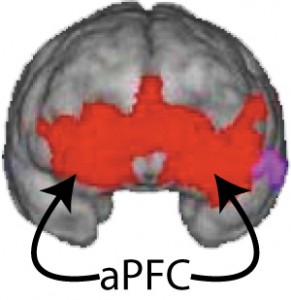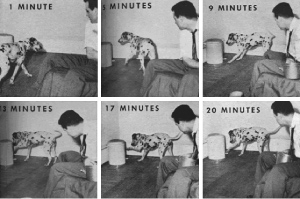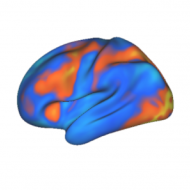
We are rarely alone when learning something for the first time. We are social creatures, and whether it’s a new technology or an ancient tradition, we typically benefit from instruction when learning new tasks. This form of learning–in which a task is rapidly (within seconds) learned from instruction–can be referred to as rapid instructed task learning (RITL; pronounced “rittle”). Despite the fundamental role this kind of learning plays in our lives, it has been largely ignored by researchers until recently.
My Ph.D. dissertation investigated the evolutionary and neuroscientific basis of RITL.
RITL almost certainly played a tremendous role in shaping human evolution. The selective advantages of RITL for our species are clear: having RITL abilities allows us to partake in a giant web of knowledge shared with anyone willing to instruct us. We might have received instructions to avoid a dangerous animal we have never seen before (e.g., a large cat with a big mane), or instructions on how to make a spear and kill a lion with it. The possible scenarios in which RITL would have helped increase our chances of survival are virtually endless.
There are two basic forms of RITL. The first is imitation. It is primarily based on mappings (possibly via ‘mirror neurons‘ in your brain) between your own body and the bodies of others. This allows you to, e.g., instantaneously mirror your arm movements to match someone else’s arm movements. The evolution of body-to-body mappings and neural systems for inferring the intentions and plans of others was likely shaped by the selective advantages these provided via RITL.
The second form of RITL is linguistic instruction. Unlike imitation, linguistic instruction provides direct mappings between abstract concepts from one mind to another. This can be extremely powerful, such as in cases in which the behavior (e.g., avoiding a lion) cannot be learned via imitation without being put in danger. It is also very powerful for its ability to refer to entire categories directly (e.g., large cats) instead of multiple instances of items within categories (e.g., showing a lion, then a cheetah, allowing the inference of ‘big cat’).
 Other forms of task learning provided selective advantages as well, yet they lack the impressive speed of RITL. For instance, our ability to learn via operant conditioning (in which the instructor ‘shapes’ behavior using rewards) typically takes hours or weeks depending on the task. One of the fastest known instances of operant conditioning involved the discoverer of operant conditioning, B. F. Skinner, teaching a dog to use a step wastebasket in 20 minutes (see bottom figure). While impressive, it pales in comparison to the mere seconds it takes to learn that task using RITL.
Other forms of task learning provided selective advantages as well, yet they lack the impressive speed of RITL. For instance, our ability to learn via operant conditioning (in which the instructor ‘shapes’ behavior using rewards) typically takes hours or weeks depending on the task. One of the fastest known instances of operant conditioning involved the discoverer of operant conditioning, B. F. Skinner, teaching a dog to use a step wastebasket in 20 minutes (see bottom figure). While impressive, it pales in comparison to the mere seconds it takes to learn that task using RITL.
Recent findings in neuroscience provides more direct evidence of the evolutionary importance of RITL in shaping who we are. A recent publication of mine in the Journal of Neuroscience demonstrated that a brain region in the front left of the prefrontal cortex (the anterior prefrontal cortex; aPFC) is involved in RITL. Importantly, research by others (see top figure) has demonstrated that this is one of the regions with among the largest increases in size in human evolution. This is inferred based on differences in the size of the region between homo sapiens and chimpanzees. Importantly, this is consistent with the notion that aPFC grew in size largely due to selective pressures to improve RITL abilities. (Of course, this brain region likely provides other selective advantages as well.)
